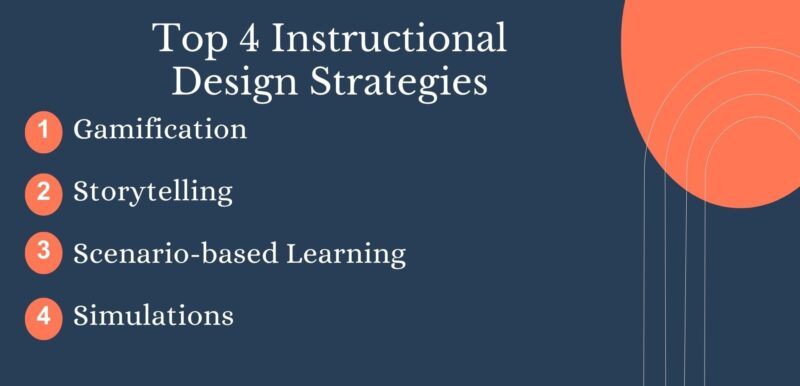Microlearning For Sales Enablement: Top 5 Reasons
In the constantly, quickly changing world of business, every opportunity matters! This is especially true for sales. And to seize every opportunity and turn it into an accomplishment, sales enablement is indispensable. It provides sales representatives with relevant knowledge and skills to be more prepared and confident in order to close more deals. But amidst the whirlwind of busy schedules and on-the-go nature, how can you facilitate sales enablement for your teams? Here’s the much-awaited answer: by leveraging microlearning for sales enablement.
You no longer need to overwhelm your sales representatives with information overload or fixed training schedules. Rather, enable them to acquire knowledge effortlessly even when their days are jam-packed with client meetings.
What are you waiting for? Say yes to microlearning for sales enablement right away! To help you gain more clarity and confidence about making this choice, in this article, we will explore in detail the top 5 reasons to leverage microlearning for sales enablement.
Are you ready to discover how less is more? Let’s begin!
5 Reasons To Leverage Microlearning For Sales Enablement
Sales enablement training no longer needs to be an obligation. It can be a choice, too. Here are the 5 amazing reasons why microlearning makes it possible.
1. Facilitates Continuous Learning For Busy Sales Representatives
In the fast-paced world of sales, balancing time and targets can get tricky. But microlearning helps you enable your learners to make the best use of their time, even when they are on the move. That’s right! Microlearning is a perfect solution for their hectic schedules. You can provide them with information in short, targeted bite-sized chunks.
No more lengthy training sessions that disrupt productivity! With microlearning, your sales professionals can access valuable information on the go, whether it’s during their commute or between client meetings. This information can be in the form of infographics, how-to videos, interactive PDFs, etc. Microlearning fosters continuous learning and skill improvement, thereby keeping the sales teams agile and adaptable in a rapidly changing market.
2. Promotes Better Knowledge Retention And Implementation
“Yes, I had attended a training session on this topic, but I can’t exactly remember.”
Well, if you’ve been in the corporate training industry for a while, hearing this statement won’t really be a new thing. Let’s accept it—one of the biggest challenges in traditional training is the “forgetting curve.” It is the decline in the ability to remember and recall knowledge over a period of time. And it can literally throw all your training efforts and investment out of the window. So, how can you beat the forgetting curve for maximum training impact for your sales team?
It’s simple: by leveraging microlearning for sales enablement. Whether it’s sales process negotiation skills or customer relationship management (CRM) tools, microlearning helps you tackle the issue of forgetting head-on. You can use different microlearning assets such as interactive PDFs, simulations, game-based nuggets, videos, etc. With focused, interactive learning modules, your sales representatives can absorb information more effectively, as they are not overwhelmed by the information overload. Microlearning focuses on providing essential (need-to-know) information that aligns with the learning objectives and contributes to skill development.
Check out the infographic below to know the difference between need-to-know and nice-to-know content.
You can easily space out learning sessions and reinforce concepts frequently, thereby promoting better knowledge retention and implementation. In case the learners forget any information, they can quickly revisit the module, which augments their confidence and competence in the field.
3. Caters To Different Learning Styles For Sales Success
Every member of the sales team has their unique strengths, weaknesses, and learning preferences. Right? So, training them all in a common, majority-preferred learning style isn’t really the way to ensure a high-impact, immersive learning experience. What can you do? Cater to different learning styles for sales enablement. And yes, it’s possible with microlearning!
You can attend to the needs of visual, auditory, kinesthetic, and read/write kind of learners by using microlearning for sales enablement. You can include various elements, such as charts, infographics, podcasts, motion-based animations, GIFs, etc., that involve multiple senses of learners to facilitate a more enriching, immersive learning experience. For kinesthetic learners, you can incorporate various scenarios, simulations, and role-based activities to promote effective learning.
This fosters learner engagement, participation, and completion rates, thereby maximizing the training ROI. Moreover, microlearning also allows you to address specific knowledge gaps and challenges in sales. The short, concise nuggets can be revisited easily by the learners for better productivity and performance. This empowers the learners to take ownership of their professional development.
4. Fosters Engaging And Interactive Learning Experiences
Bid adieu to dull, monotonous training sessions that fail to captivate learners. With microlearning, you can offer your sales teams an engaging learning experience that is sure to foster engagement and interaction. Microlearning brings a breath of fresh air into sales enablement by incorporating engaging multimedia such as videos, infographics, animations, digital flashcards, etc.
And to boost interactivity, microlearning leverages interactivities like click-throughs, drag-and-drop, click-and-reveal, fill-in-the-blanks, etc. It also incorporates interactive modules containing microlearning quizzes and games. You can turn sales processes, product features, policies, CRM tool features, etc., into multilevel games. Basically, interactivities provide the learners with an opportunity to interact with the learning content rather than simply being passive consumers of information. This creates an engaging, interesting learning experience for the learners.
Apart from the above two elements, your selection of Instructional Design strategy also plays a significant role in ensuring learner engagement. Here’s an infographic that suggests the top 4 Instructional Design strategies that can be a total game-changer for your sales enablement training.
5. Ensures Measurable Impact And Positive ROI
The importance of tracking the effectiveness of training programs is unparalleled. It offers you valuable insights into the overall success of the training program. For measuring sales training performance and training effectiveness, microlearning comes in super helpful. It helps you gain access to measurable metrics and KPIs that enable you to evaluate the impact of training on sales performance.
With the help of learning analytics, you can evaluate and plan where you can leverage microlearning assets in sales enablement to ensure continuous improvement, personalization, adaptive learning, and performance support. Learning analytics offers you data such as number of views, frequency, user engagement, contribution, a correlation between the asset and course performance, etc., for the microlearning assets. This enables you to make data-driven decisions and optimize the sales enablement training process.
Wrapping It Up
Microlearning is a game-changer for sales enablement. It is an effective approach to provide engaging, high-impact learning experiences for your sales teams. It empowers your sales teams to excel in their roles, thereby driving success and growth for your organization.



